
- Search
-
Login
-
0
ComparisonAdd products to compare, then they will appear here and you can compare parameters.
-
0
0 €Nothing in the basket.
NewTek LightWave 2020 - New license
Product description
LightWave 3D is a legend in the field of 3D graphics. It combines a cutting-edge renderer with intuitive tools for 3D modeling and animation. LightWave is a worldwide favorite as a complete 3D visual effects package for film and television productions, TV spots, print graphics, visualizations, game development, and graphics for the web. LightWave users have collected more Emmy Awards than users of any other program, thanks to the program's superior features: 999 render clients included in the installation, free manufacturer-provided technical support, and full 64-bit compatibility with both Windows and Mac OS X (Universal Binary). LightWave 2019 introduces many new features for game creation (direct UE support, etc.), organic modeling in Layout, UV/UDIM mapping, etc. The2020 version is already on sale (from April 23, 2020).
Major trick studios and post-production companies invest years and often significant sums of money to create their own software and dedicated production chains. Such solutions require extensive corporate infrastructure and high-end technical facilities; they are therefore only ideal for companies with hundreds of employees. For most smaller studios with 40 or fewer employees, however, they are an unnecessary luxury.
LightWave is an ideal part of production chains that incorporate a variety of other software tools, primarily due to its powerful data exchange technologies, including support for FBX, ZBrush GoZ, COLLADA, Unity Game Engine and Autodesk Geometry Cache standards. Unlike many other software solutions, LightWave offers a complete set of tools, from basic modeling to advanced character animation and photorealistic rendering systems. It provides robust polygonal and subdivision surface modeling tools, a unique layered material creation system and shader tree structure, cutting-edge character animation and rigging features, volumetric and dynamic effects systems, an integrated rendering engine based on Global Illumination algorithms, and more...
LightWave has been a favorite tool of artists and studios for over 20 years. In that time, it has helped create countless movie stunts, television series and computer games. Download a free 30-day demo today and find out why so many 3D graphic designers rely on LightWave. Whatever you do, LightWave gives you all the tools you need to bring your ideas to life - on time, on budget, and in perfect quality
New in 2020
The new LightWave 3D 2020 brings a wealth of new features including two new methods for rendering global illumination technologies ("Brute Force" and "Irradiance Cache"), new "Principled Hair Material" and "Artist Friendly Control Hair Shader" shaders in the FiberFX plug-in, support for Partio (Houdini) particle objects in LightWave OpenVDB tools, animation enhancements (e.g. the ability to change the Rotation Order of individual skeleton elements and save this setting to the scene file), "Local Action Center" feature in Modeler for easier simultaneous modification of geometric groups, Tone Mapping (new Pixel Filter), improvements for Environment Light, improved Scene Editor and FBX import, improved OpenGL shaders for more real-time scene preview, faster and higher quality SSS (sub-surface scattering) shader output, and a new iOS and Android app to monitor the progress of calculations.
New for 2019
The list of new features is headlined by revolutionary integration tools for the Unreal Engine to transfer data between LightWave and this leading game engine, in real time. The system performs network communication automatically -- thanks to technology adopted from the NewTek NDI platform -- and allows multiple LightWave workstations to communicate simultaneously with a single UE instance. The LightWave Bridge feature is the first technology to enable real-time collaboration between a 3D application and the Unreal Engine game development platform
Another major new feature is the new Metamorphic system, which embodies a universal system for organic modeling, animation and painting in a Layout module environment. Optimized for multiple threads, it allows for very fast work, a wide variety of brushes, different animation modes, non-linear interpolation and more!
More new features in the 2019 version:
- New UV/UDIM mapping tools in Modeler
- Smoothing Groups feature in Modeler allowing precise control over the shape of models
- Limited Bones mode used to limit the bones that affect a selected point (according to the target game engine). The mode is optimized to work in real time to present the performance expected in games.
- Interactive data exchange in FBX format; wider support for FBX standard
- New set of Shading Model Customization Tools parameters
- New basic object types
- Tools for creating data structures according to the OpenVDB specification
- Rendering improvements:
- Edge Shader Node simulates edge rounding without proper geometry
- Patina Node is used to "wear" surfaces
- Procedural Shader Node brings together classic LightWave procedural textures for the Node Editor
- Implementation of NVIDIA OptiX Denoising technology for noise reduction in still images (requires NVIDIA GPU)
- Despike feature to reduce or eliminate image artifacts caused by numerical instability in rendering
- Physically accurate Physical Sky shader and associated SunLight light type
- User Interface:
- Display Scaling settings for high resolution monitors and multi-monitor configurations
- Enhanced Layout Change Rollback functionality
- Pop-up menus now support mouse wheel, navigation buttons, etc.
- Ability to set grid (size, color, brightness...) in Node Graph
- Online documentation now takes image format/resolution into account
- Licensing model for large studios (on request)
Full list of new featureshere.
New in 2018
Physical rendering.Completely redesigned architecture for lighting and scene rendering. Produces more realistic output and is easier to use
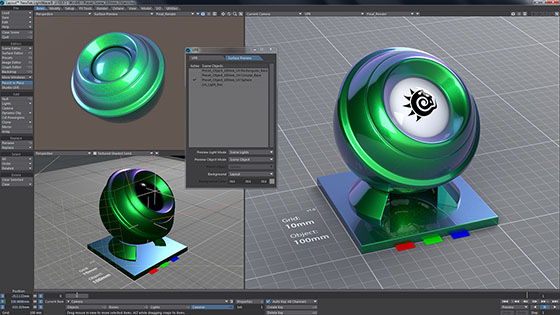
Rendering of individual scene components into buffers.Enhanced options for rendering individual scene components to a separate image output for easier image post-production. Real-time preview of individual buffers using VPR, or the ability to create custom buffers in the Node Editor
Volumetric rendering and Open VDB support. Newvolumetric object templates allow specification of physical properties including scattering, absorption or emission; the nodal structure of the effect can be edited
Scene lighting.An entirely new architecture for scene lighting implements a physical lighting model, including the ability to make light sources visible to the camera and import IES files to simulate real light sources
Material and Surface Editors.The Surface Editor has been redesigned to support the new material system including a number of nodal structure based materials
Virtual Reality Camera.The new virtual reality camera supports cylindrical and spherical modes for 360° static and animated output for VR applications
Modifier Stack with new deformation nodes.Simplifies working with bones, implicit surfaces, etc. with the ability to interactively change the order of operations in the stack by dragging with the mouse
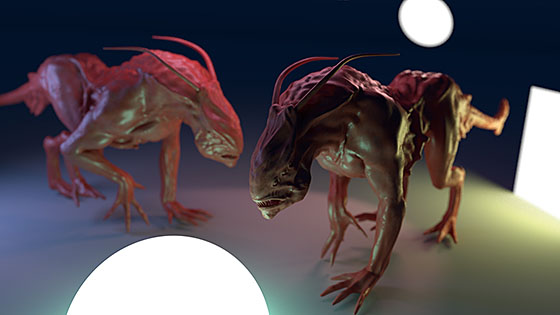
Cel Shader, improvements for edge rendering.The edge rendering tool now allows you to use any Surface Editor material. Also new is the ability to use gradients for NPR rendering
More integrated FiberFX plug-in.The enhanced FiberFX plug-in is now more integrated with the new lighting and scene rendering system. Any material can be applied to individual hairs. Hairs are also generated using a new object template architecture

Parametric modeling.New parametric modeling features allow you to generate virtual geometry in the Layout module. You can assign materials or displacement maps to objects and render them without having to create geometry
Noise reduction filter.The new Noise Reduction Filter speeds up Global Illumination rendering by allowing you to use fewer rays and samples
New modeling features in the Modeler module.New Layout View viewport for displaying the current camera view of the Layout module. Also new are fully interactive Lattice, Smoothing, Array and Spline Bridge tools
LightWave 2018 also includes enhancements to the Viewport Preview Renderer (VPR), UDIM texture support, compatibility with the Unity 5 developer app, andmore!
"Creating visual effects for The Walking Dead, Grey's Anatomy, and NCIS: Los Angeles requires complete stability and high performance.LightWave embodies both," said Al Lopez of Stargate Studios. "We can't wait toincorporate LightWave's new 2018 tools into our workflows. LightWave allows us to create the impossible, every day!”
New in 2015
Dynamic limiters
With new types of limiters (Point-to-Point, Hinge, Slider, Cone Twist, Spring and 6-DOF), your dynamic simulations will gain in realism. Whether you're animating a car with a fully functional suspension or a character falling down a flight of stairs, the new limiters will make your job easier and allow you to achieve more realistic results
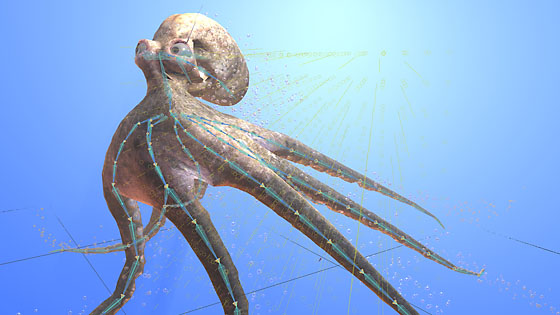
Intelligent sampling
The new "Importance Sampling" sampling method greatly increases the output quality of scenes rendered using Global Illumination methods illuminated with HDR maps. New algorithms concentrate rays into points of interest and eliminate noise and other image artifacts caused by varying illumination levels. The result is a "cleaner" and also more predictable output.
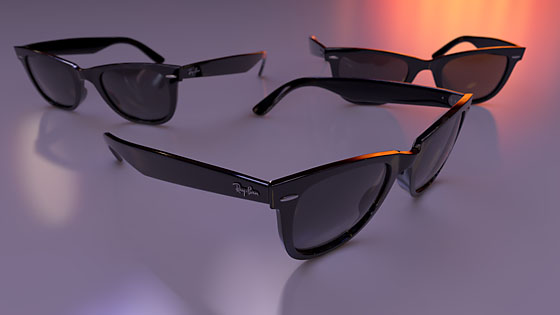
Perspective analysis
The "Match Perspective" tool is used to quickly analyze the perspective in recorded footage or photographs and match it to LightWave's output. It eliminates the time-consuming manual process of estimating the original camera position and rotation
Genoma 2 Rigging System
Genoma's modular rigging system for creating and matching animation bones is a complete rigging development kit (RDK) that greatly speeds up the entire process of preparing animated virtual puppets. The new version of Genoma 2 is capable of creating very complex bone assemblies and will meet the requirements of all users, including large animation studios. It supports animation using mathematical expressions and scripts and includes new rigs for human characters, felines or arthropods
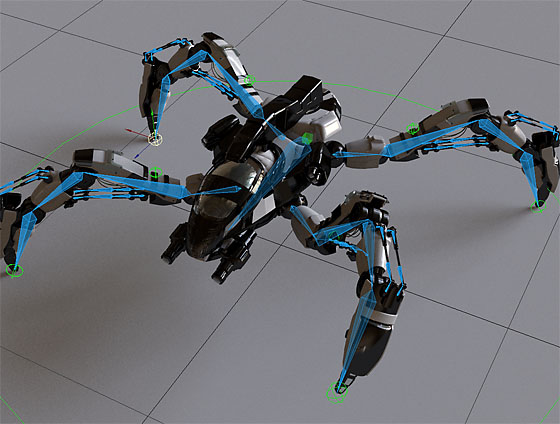
Edge rendering
Increased creative control over traditional animation-style rendering (i.e. Cell Shading) is provided by new features for rendering edges that form the intersection of models. The new "Patch Border Rendering" command will render the edges of divided surfaces (created using the Sub-Division method), which is useful for e.g. jointly demonstrating the original polygonal geometry and the newly created divided surfaces. Edges can now be rendered to a separate "Edge Buffer" layer for easier post-production.
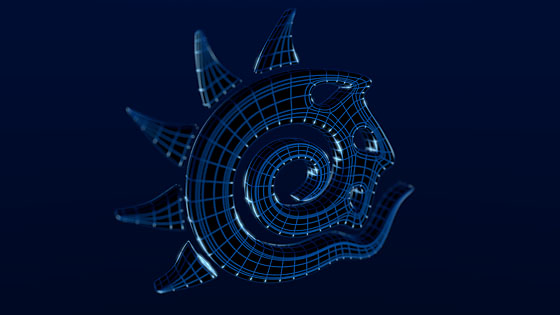
Improved support for QuickTime, Alembic and FBX formats
LightWave in the 64-bit Windows version now supports both importing and saving videos to a QuickTime container. LightWave 2015 also improves the Viewport Preview Renderer (VPR) and includes new and improved features in the areas of interactive hierarchy creation, texture matching in the Modeler module, hair creation using the Fiber FX plug-in, and support for the Unity 5 game engine
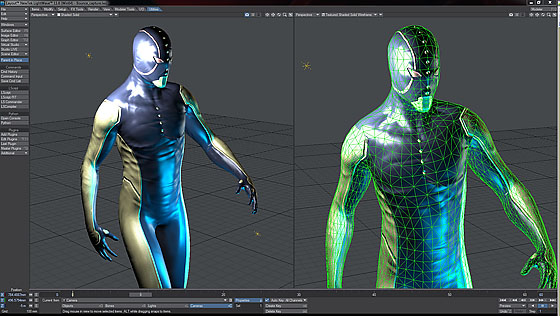
Previous version 11.6 news:
New animation capabilities: with the new Spline Control tool, users can control and deform objects of tentacles, tails, ropes, etc., via NULL objects or other models. The Raycast Motion feature uses Raycasting algorithms to detect collisions in the scene and finally the Compound Node allows users to simplify complex tree structures in the Node Editor window
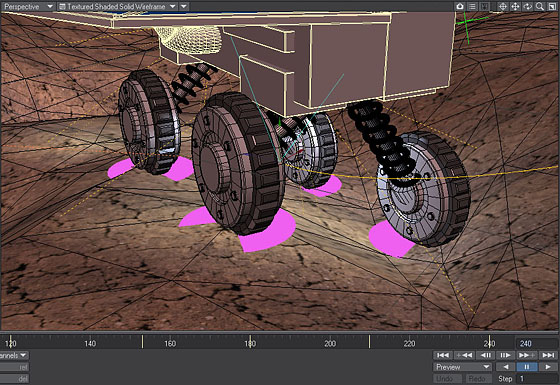
New features for virtual production, pre-visualization and game development: NVIDIA CgFX shader technology can now be used for WYSIWYG creation of 3D scenes. The scene display in LightWave OpenGL mode will match the final image output of real-time engines. Users can apply normal maps to 3D objects to mimic the appearance of highly detailed objects for geometry with significantly fewer polygons, create custom CgFX shaders, or apply existing CgFX shaders
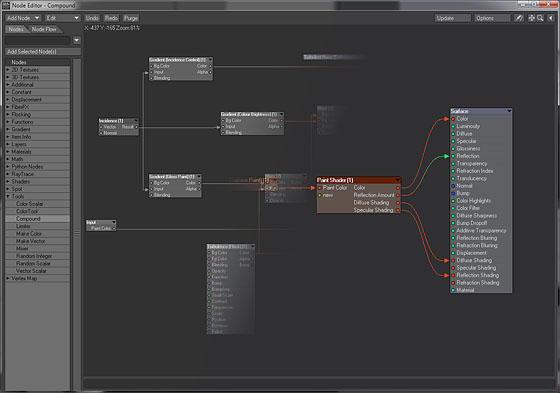
LightWave Modeler now includes import and export modules for popular STL and PLY file formats. VRML format is also supported, including surface color information for color 3D printing of models with textures. You can set the export format (ASCII or binary), model orientation, or export units. LightWave also includes special tools for geometry optimization before 3D printing
Stereoscopic 3D display: With full support for NVIDIA 3D Vision, 3D Vision Pro, and stereoscopic displays with HDMI, users can display scenes in stereoscopic quality on a variety of target devices, including stereoscopic monitors or projector walls.
Parameters
| Manufacturer: | NewTek |
| Category: | 3D software |
Main parameters
| Operating system | Windows |
| Operating system | MacOS |
- Show all

NewTek LightWave 2020 - New license
LightWave 3D is a legend in the field of 3D graphics. It combines a cutting-edgeCall us for pricing information


